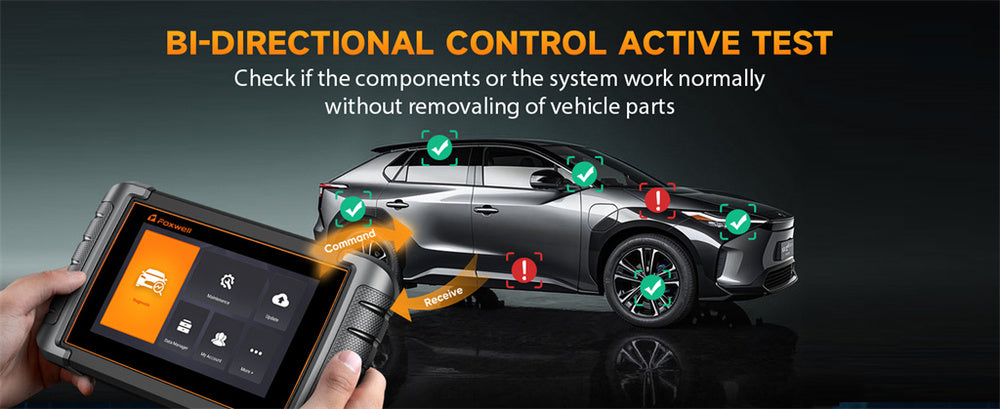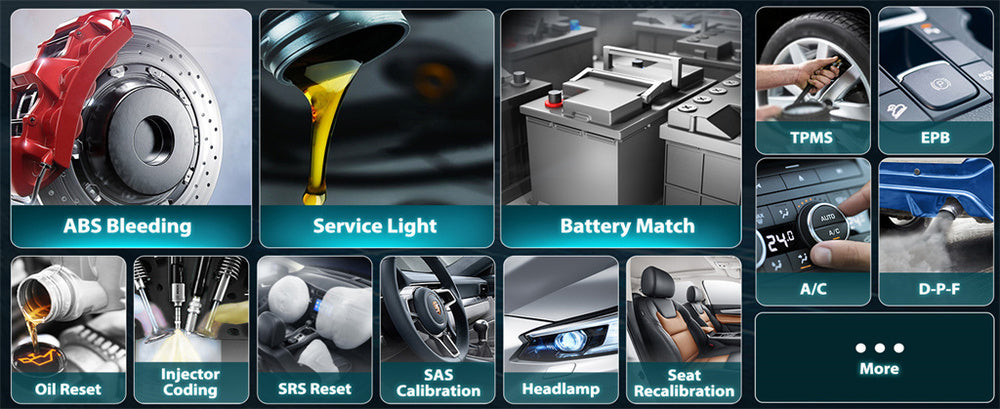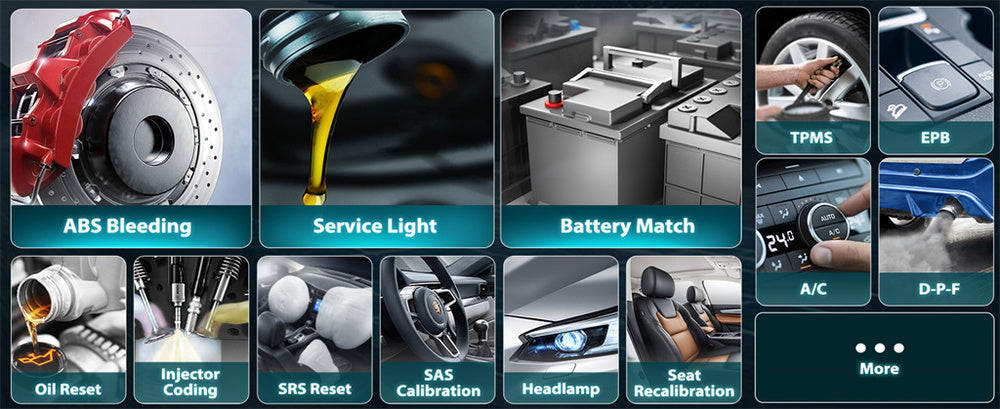When your transmission begins causing issues with your car, quick and reliable answers are needed quickly and reliably. Scan tools may provide helpful diagnostic data, but can they detect transmission problems efficiently?
To answer this question effectively, let's dig deep and discover all its details to gauge when scanning tools are helpful and when they may fall short.
Can a Scan Tool Detect Transmission Issues?

Although a scan tool can provide many insights into transmission-related issues, its usefulness must be kept in perspective. Scan tools work by reading Diagnostic Trouble Codes (DTCs) stored by your car's onboard computer.
These codes alert to various issues with transmission systems, particularly electronic issues like sensor malfunction or problems with the Transmission Control Module (TCM).
Scan tools can provide an efficient method for quickly identifying electrical and sensor issues; however, they don't offer complete resolution. For instance, they cannot diagnose mechanical problems such as worn gears or damaged clutches.
Therefore, while scanning tools provide valuable assistance when diagnosing transmission problems, they are only one piece of a much bigger puzzle.
What Types of Transmission Problems Can a Scan Tool Detect?
Scan tools are ideal for identifying electronic issues with the transmission. They're instrumental in checking solenoids and TCM for fluid regulation or gear shift control, among other components that rely on these systems to maintain smooth functioning.
A scan tool will quickly be able to retrieve DTC codes that help pinpoint specific parts that have stopped functioning correctly so you can make repairs on them as soon as possible.
Scanning tools also excel at detecting sensor malfunctions. Sensors monitor speed, temperature, and pressure to enable proper transmission functioning; when one fails, it can throw off the entire system, leading to erratic shifting or even transmission failure.
However, with proper diagnostic tools in place, they will detect these faults and display any relevant codes for repair.
Scan tools can also detect torque converter issues, such as slipping or improper locking up. While the tool won't provide an in-depth assessment of its condition, it will alert you to electronic issues affecting performance.
Scan tools effectively diagnose electronic and sensor-related transmission problems but may fail to recognize deeper mechanical issues.
What Transmission Problems can be detected with a Scan Tool?
While scan tools are highly useful, they do have drawbacks. One such limitation is their inability to detect mechanical transmission issues—for instance, slipping, grinding noises, or shifting problems could all indicate wear-and-tear wear in your transmission that won't show up with scan tools.
Wear-out gears, clutch failure, or damaged drive chains typically won't set off a code in most instances; your car's onboard computer doesn't monitor these mechanical issues, and thus, your scan tool won't detect them.
Also, problems like leaking transmission fluid might go undetected by your scan tool. However, low transmission fluid levels could eventually trigger sensor malfunctions that trigger codes. Therefore, it would be wise to inspect fluid levels and conditions manually should there be suspicion that something might be amiss.
As previously stated, scan tools are excellent for diagnosing electronic issues; however, mechanical concerns require manual inspection from a mechanic.
How to Select the Appropriate Scan Tool for Diagnosing Transmission Issues
Not all scan tools are created equal, and selecting one explicitly tailored to transmission diagnostics can make a big difference. Any diagnostic tool you consider purchasing should have several features to address transmission problems adequately.
First and foremost, look for a tool with access to the Transmission Control Module (TCM). As the TCM controls shifting and performance for your transmission, a device that can access and read codes from this module will provide more accurate insights into transmission issues than essential scan tools alone.
Many basic models don't offer this capability, so purchasing more advanced models may be necessary to diagnose transmission problems effectively.
Bidirectional control is another essential feature. Some advanced scan tools allow for bidirectional control by sending commands directly to the vehicle and running specific tests, like activating solenoids or checking transmission fluid pressure. This feature can help pinpoint transmission issues more precisely if they are intermittent.
Make sure your scan tool supports manufacturer-specific diagnostic codes. Each car manufacturer offers its own set of diagnostic codes in addition to OBD2 codes, providing a more precise assessment of transmission health.
Real-time transmission temperature and pressure monitoring tools may be ideal for tracking transmission performance more closely, providing timely notice of any potential issues before they worsen.
Investment in a high-quality scan tool might cost more upfront. Still, its accuracy in diagnosing issues will save time and money in diagnosing any future problems.

How to Use the Scan Tool to Diagnose Transmission Issues
The Foxwell NT809TS is an impressive scan tool with in-depth diagnostic capabilities for your vehicle's transmission system, providing detailed analyses. Here's how you can use it to detect transmission problems quickly:
- Locate an OBD2 Port: Locate the OBD2 port underneath your dashboard, typically near the driver seat, and secure it with the Foxwell NT809TS plug.
- Turn On The Ignition: Make sure that your car's ignition is switched "ON" without starting the engine to power its diagnostic system.
- Select the Transmission Control Module: When using the Foxwell NT809TS, accessing transmission-specific codes requires navigating the TCM section. Here, you'll discover any problems related to shifting, solenoids, or sensors.
- Launch a Full Diagnostic Scan: Launch a full diagnostic scan with your Foxwell NT809TS to identify transmission system error codes and understand them more easily. The scan also explains what each code means so you can better comprehend any issues arising.
- Review and Clear Codes: After conducting your scan, carefully review all codes and their explanations. Once the issue has been addressed, clear any remaining codes before testing again to see if any problems persist.
Foxwell NT809TS also features live data monitoring for real-time fluid temperature and gear engagement data, which is essential when diagnosing complex transmission problems.
What Can Be Done if Scan Tools Don't Detect Transmission Issues?
If your scan tool doesn't identify transmission problems but your car still shows symptoms, don't disregard them. Instead, conduct a manual inspection and ensure all fluid levels are healthy without burnt or contaminated fluid causing problems such as slipperiness and rough shifting, even without error codes.
There's also the chance that your vehicle is experiencing mechanical problems that a scanner alone cannot identify.
If your transmission is grinding or struggling to shift smoothly, this could be caused by worn-out gears or clutches; therefore, it would be wiser for a mechanic to inspect your transmission to detect any internal damages.
If the problem seems electronic but your scan tool fails to pick it up, upgrading to an advanced diagnostic tool may help identify the issue more readily. Basic models may only access some necessary systems or manufacturer-specific codes.
If the problem continues, professional help from an experienced technician should always be sought as they possess the tools and experience to diagnose even stubborn transmission issues.
Conclusion
Scan tools are invaluable for diagnosing transmission problems, mainly electronic or sensor malfunctions. Still, it's essential to recognize their limitations when diagnosing mechanical issues.
Understanding what your scan tool can and cannot detect will enable you to address transmission problems more efficiently and swiftly. If it doesn't provide adequate answers, do not hesitate to seek professional inspection for a more comprehensive inspection of the problem area.
FAQs
Will a bad transmission show a code?
Yes, a bad transmission can trigger a code, but only for electronic issues like sensor malfunctions or transmission control module (TCM) failures. Mechanical problems may not show a code and would require a manual inspection.
Does a diagnostic test show transmission problems?
A diagnostic test can show transmission problems related to electronics and sensors. It identifies issues like faulty solenoids, sensors, or TCM malfunctions but may not detect mechanical issues.
Can a scan tool check transmission fluid?
Some advanced scan tools can check transmission fluid temperature and detect issues related to fluid pressure, but they cannot directly measure fluid levels or check for leaks.




Leave a comment
This site is protected by hCaptcha and the hCaptcha Privacy Policy and Terms of Service apply.